- Introduction to Arson Under California Law
- Defining Arson in California
- Elements of Arson Under California Penal Code
- 1. Willful and Malicious Intent
- 2. Burning of Property
- 3. Property Type
- 4. Use of Means Dangerous to Life
- 5. Recklessness or Negligence
- Degrees of Arson in California
- First-Degree Arson
- Second-Degree Arson
- Third-Degree Arson
- Common Questions About Arson Charges
- 1. What are the different degrees of arson in California?
- 2. What defenses are available for arson charges?
- 3. How is arson investigated and prosecuted?
- 4. What are the penalties for arson in California?
- 5. Can arson charges be reduced or dismissed?
- Case Studies: Arson Cases in California
- Case Study 1: Inhabited Structure Arson
- Case Study 2: Arson with Intent to Commit a Felony
- Case Study 3: Accidental Fire Misclassified as Arson
- The Role of Expert Witnesses in Arson Cases
- The Impact of Arson Convictions
- Navigating the Legal Process
- Arrest and Initial Charges
- Pretrial Proceedings
- Trial Phase
- Sentencing and Appeals
- Conclusion
- Call to Action
Introduction to Arson Under California Law
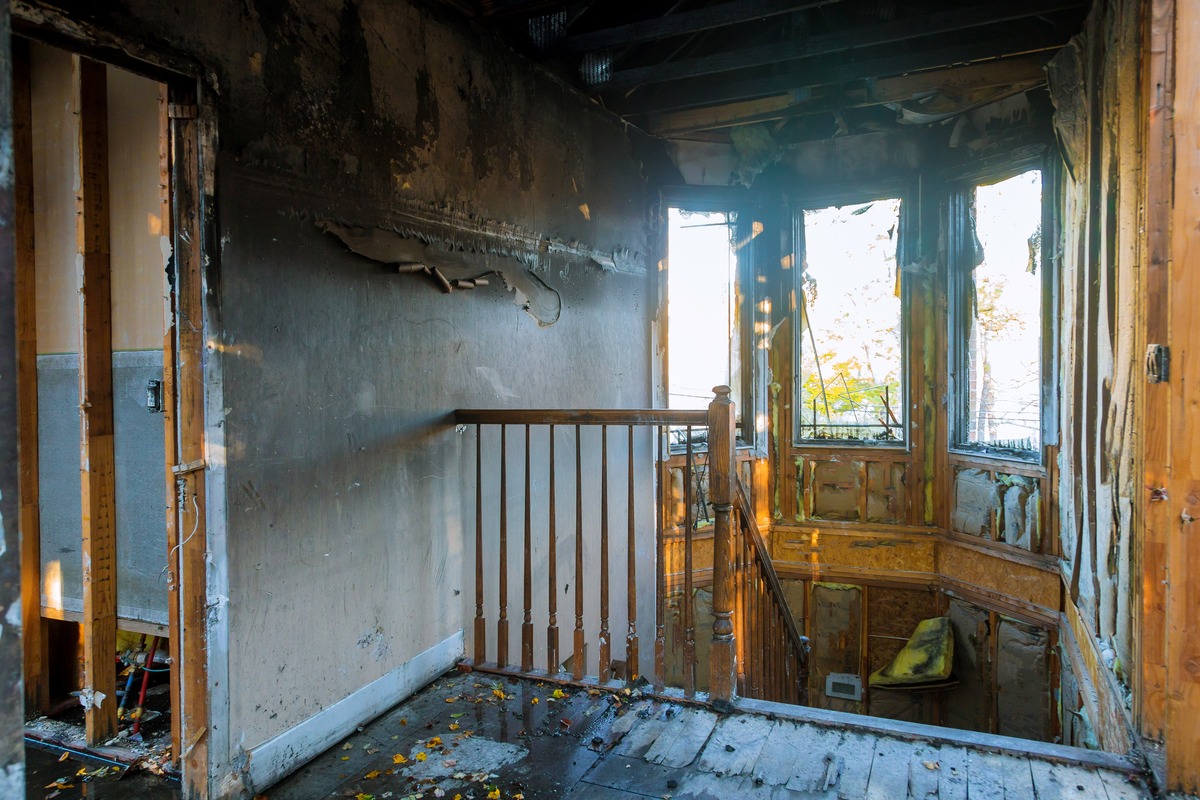
- Legal Defense: For those accused, knowing these elements can aid in constructing a robust defense.
- Awareness: For the general public, understanding what constitutes arson can help recognize and prevent such acts.
- Legal Clarity: For legal professionals, a deep comprehension of arson laws ensures accurate representation and prosecution.
This guide aims to dissect the components that define arson in California, explore the different degrees and associated penalties, address common questions, examine real-life cases, and outline the legal processes involved. By the end, readers will have a thorough understanding of arson within the California legal context.
Defining Arson in California
At its core, arson involves the intentional or malicious burning of property. However, California law provides a more detailed definition, distinguishing arson from accidental fires and specifying various conditions that elevate the offense’s severity.
Legal Definition

This definition emphasizes two critical components:
- Unlawful and Willful: The act must be intentional and not accidental. There is a deliberate intent to set the fire.
- Property: The target can be any structure, whether it’s a building, vehicle, or other form of property.
Differentiating Arson from Other Fire-Related Offenses
While arson involves the intentional setting of fires, not all fire-related offenses fall under arson. Distinctions include:
- Criminal Mischief: This involves intentional damage to property without the element of burning.
- Reckless Burning: Setting fires without Intent to cause significant harm but acting with disregard for the potential consequences.
- Accidental Fires: Unintentional fires caused by negligence or unforeseen circumstances, lacking malicious Intent.
Understanding these distinctions is vital, as the presence or absence of Intent significantly impacts the charges and potential penalties.
Elements of Arson Under California Penal Code
To secure a conviction for arson, the prosecution must establish specific elements beyond a reasonable doubt. These elements form the foundation of what constitutes arson under California law. Each component must be individually proven, and the absence of anyone can fail to secure a conviction.
1. Willful and Malicious Intent
Willful Intent refers to the deliberate decision to set fire to property. This implies that the defendant had a conscious objective in initiating the fire.
Malicious Intent indicates that the act was done with a wrongful purpose, such as to cause harm, destruction, or to conceal another crime.
Importance: The presence of both willful and malicious Intent distinguishes arson from accidental fires or negligent burning. Proving Intent is often the most challenging aspect of an arson case, as it delves into the defendant’s state of mind.
Example: If someone sets fire to a building to claim insurance, the Intent to burn the property maliciously is evident.
2. Burning of Property
This element requires that property have been burned or attempted to burn. The property can range from buildings and vehicles to vegetation and personal items.
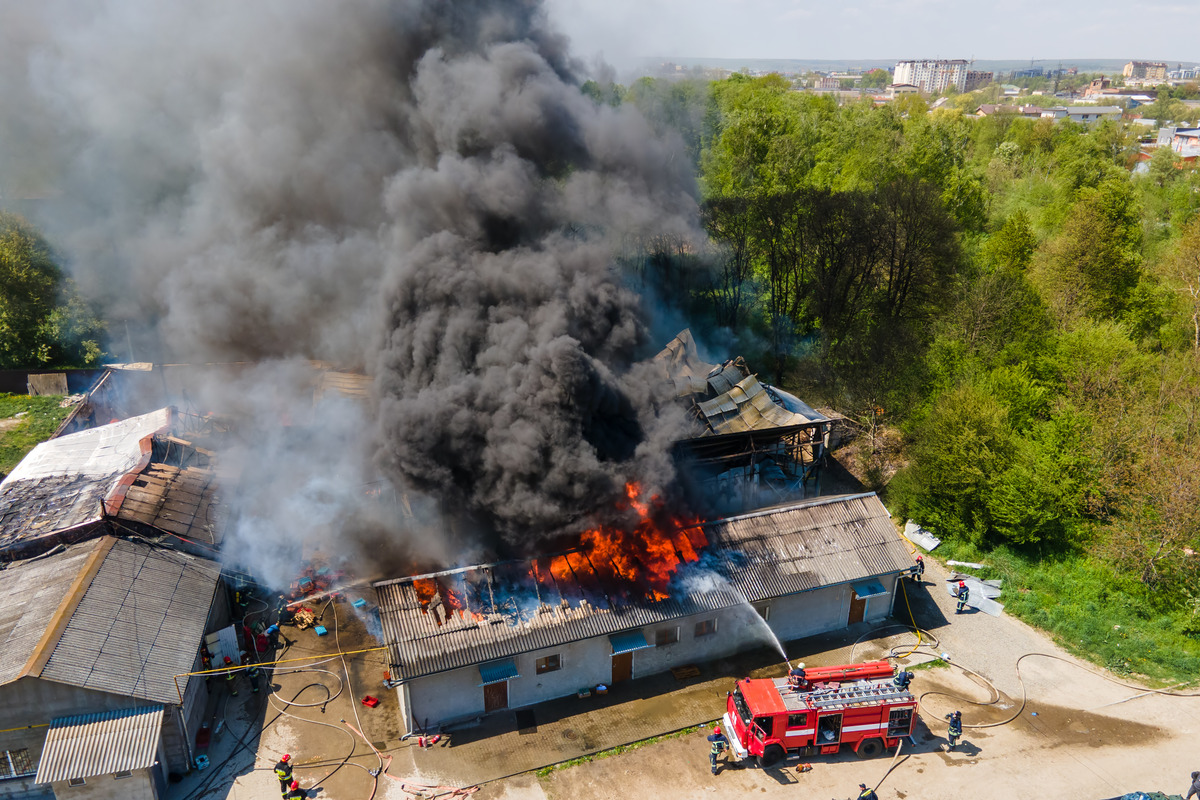
Considerations:
- Type of Property: Different types of property may influence the severity of the charge.
- The extent of Burning: Destruction versus minimal damage can affect the degree of arson.
- Attempted Burning: Even if the fire is not successfully set, the attempt itself can constitute arson if the Intent is proven.
Example: Sprinkling gasoline around a car with the Intent to ignite it demonstrates the act of burning property.
3. Property Type
California law categorizes arson based on the type of property targeted. The nature of the property can escalate the offense’s severity.
Categories:
- Residential Structures: Homes and other dwellings.
- Commercial Structures: Businesses, warehouses, and other commercial entities.
- Public Property: Government buildings, public infrastructure, and utilities.
- Uninhabited Structures: Buildings not currently occupied by people.
Impact: Setting fire to a residential structure is typically viewed more severely due to the potential threat to human life compared to an uninhabited building.
Example: Burning down a family home poses more significant legal consequences than setting fire to an abandoned warehouse.
4. Use of Means Dangerous to Life
This element examines whether the methods or means used to set the fire pose a significant risk to human life. Employing highly flammable or explosive materials can escalate the arson charge.
Implications:
- Accelerants: The use of gasoline, kerosene, or other accelerants increases the danger level.
- Method of Ignition: Using explosives or incendiary devices heightens the risk to life.
- Potential for Spread: Fires that can quickly spread to nearby structures or areas increase the severity.
Example: Using fireworks to ignite a building not only sets the property ablaze but also poses a significant risk of injury or death to individuals nearby.
5. Recklessness or Negligence
While arson typically involves intentional acts, in some instances, reckless or negligent behavior leading to a fire can also result in arson charges. This is particularly relevant when the defendant’s actions demonstrate a blatant disregard for the potential consequences.
Definitions:
- Recklessness: Conscious disregard of a substantial and unjustifiable risk.
- Negligence: Failure to exercise reasonable care, leading to unintended consequences.
Legal Significance: Arson based on recklessness or negligence may be charged with lesser degrees of offense than intentional arson.
Example: If intentionality is absent, leaving a stove unattended and causing an accidental fire might be classified as reckless burning.
Degrees of Arson in California

First-Degree Arson
Definition: The most severe form of arson, first-degree arson, involves the willful and malicious burning of an inhabited structure or dwelling with the Intent to commit a felony.
Key Characteristics:
- Inhabited Structures: The target is a structure currently occupied by individuals, increasing the potential risk to human life.
- Intent to Commit a Felony: Often, the fire is set to facilitate another crime, such as burglary, or to destroy evidence.
- Aggravating Factors: Includes circumstances like setting multiple structures ablaze, endangering lives, or prior arson convictions.
Legal Citation: California Penal Code § 451
Penalties:
- Felony Charges: Classified as a “wobbler,” meaning it can be charged as either a felony or a misdemeanor, depending on the case specifics.
- Imprisonment: Potential state prison time ranging from 3, 6, or 11 years.
- Fines: Substantial fines, often exceeding $10,000.
- Additional Consequences: Restitution to victims, probation, and a lasting criminal record.
Example: Arsonist sets fire to a family home intending to steal valuables, leading to the family’s displacement and loss of property.
Second-Degree Arson
Definition: Second-degree arson encompasses the intentional burning of property without the specific Intent to commit a felony but with a reckless disregard for human life.
Key Characteristics:
- Uninhabited Structures: Targets may include unoccupied buildings, vegetation, or public property.
- Reckless Disregard: The act demonstrates a blatant indifference to the potential harm or loss of life resulting from the fire.
- No Immediate Threat to Life: While dangerous, the fire does not directly threaten human life as first-degree arson does.
Legal Citation: California Penal Code § 452
Penalties:
- Felony Charges: Also classified as a wobbler, subject to being charged as a felony or misdemeanor based on case specifics.
- Imprisonment: Potential state prison time ranging from 2, 4, or 6 years.
- Fines: Fines can reach up to $10,000 or more.
- Additional Consequences: Similar to first-degree arson, including restitution and probation.
Example: An individual sets fire to an abandoned warehouse, showing disregard for the surrounding environment but without immediate human danger.
Third-Degree Arson
Definition: The least severe form of arson, third-degree arson, involves the malicious burning of property without any immediate danger to human life.
Key Characteristics:
- Non-Inhabited Property: Includes property that individuals do not currently occupy.
- No Risk to Life: The act does not pose a direct threat to human life, focusing solely on property damage.
- Minimal Intent: While still malicious, the Intent is purely to damage property rather than to cause broader harm.
Legal Citation: California Penal Code § 453
Penalties:
- Misdemeanor Charges: Typically charged as a misdemeanor rather than a felony.
- Imprisonment: Possible county jail time for up to 1 year.
- Fines: Fines up to $1,000.
- Additional Consequences: Probation and restitution may also apply.
Example: An individual sets fire to a shed in their backyard out of frustration, causing property damage without endangering lives.
Common Questions About Arson Charges

1. What are the different degrees of arson in California?
As outlined previously, California categorizes arson into three degrees—first, second, and third—each distinguished by factors such as Intent, property type, and potential risk to human life.
- First-Degree Arson (Cal. Penal Code § 451): Involves the intentional and malicious burning of an inhabited structure with the Intent to commit a felony.
- Second-Degree Arson (Cal. Penal Code § 452): Covers the intentional burning of property without Intent to commit a felony but with reckless disregard for life.
- Third-Degree Arson (Cal. Penal Code § 453): Pertains to the malicious burning of property without any immediate danger to human life.
Each degree carries different sentencing guidelines, with first-degree arson facing the harshest penalties due to the increased risk and potential harm involved.
2. What defenses are available for arson charges?
Defending against arson charges requires challenging one or more of the elements that constitute the crime. Effective defenses may include:
- Lack of Intent: Demonstrating that the fire was accidental or unintentional, thereby negating the malicious Intent required for arson.
- Insufficient Evidence: Arguing that the prosecution has not met the burden of proving all necessary elements beyond a reasonable doubt.
- Mistaken Identity: Providing evidence that the defendant was not present at the scene or was not the one who set the fire.
- Alibi: Presenting a credible alibi that places the defendant away from the scene when the arson occurred.
- Consent: In some cases, showing that the property owner consented to the burning (e.g., controlled burns for agricultural purposes).
- Mental State: Arguing that the defendant lacked the mental capacity to form the Intent required for arson, potentially leading to an insanity defense.
- Suppression of Evidence: Challenging the admissibility of evidence obtained illegally or without proper authorization.
- Affirmative Defenses: Utilizing defenses such as duress or necessity to justify or excuse the behavior.
Employing a combination of these defenses can effectively challenge arson charges, depending on the specifics of the Case.
3. How is arson investigated and prosecuted?
Arson investigations are multifaceted, involving various professionals and processes to determine the cause and Intent behind a fire. The investigation and prosecution process typically includes the following steps:
Fire Scene Investigation
- Origin and Cause Analysis: Fire investigators examine the scene to identify where the fire started and what caused it. This involves analyzing burn patterns, identifying accelerants, and determining the sequence of events.
- Evidence Collection: Collect physical evidence such as debris samples, accelerant residues, ignition sources, and any remaining fire accelerants.
- Photographic Documentation: Taking detailed photographs and videos of the scene to preserve the state of the fire’s impact and potential evidence.
Collecting and Analyzing Evidence
- Laboratory Testing: Forensic analysis of samples to detect the presence of accelerants or other chemicals that indicate intentional ignition.
- Surveillance Footage: Reviewing video recordings from nearby cameras to identify suspects or observe suspicious activity.
- Digital Evidence: Analyzing data from electronic devices, such as smartphones or computers, that may provide insights into the defendant’s Intent or actions.
Witness Interviews
- Identifying Witnesses: Speaking with neighbors, passersby, or individuals who might have information about the fire or the defendant’s activities.
- Gathering Statements: Collecting detailed accounts that can corroborate or refute the prosecution’s theory of the Case.
Expert Testimony
- Fire Scientists: Experts provide testimony on the technical aspects of fire behavior, origin, and cause.
- Forensic Analysts: Specialists discuss the analysis of physical evidence, such as accelerant residues or ignition sources.
Establishing Motive and Intent
- Financial Gain: Demonstrating that the defendant had an economic incentive, such as insurance fraud.
- Covering Up Another Crime: Showing that the fire was set to destroy evidence of another illegal activity.
- Personal Vendetta: Proving that the defendant had a personal grudge against the property owner or another individual.
Filing Charges
- Prosecutorial Decision: Based on the gathered evidence, the district attorney determines whether to file charges and decides on the appropriate degree of arson.
- Plea Negotiations: Engaging in discussions with the defense to reduce charges in exchange for a guilty plea potentially.
Trial and Prosecution
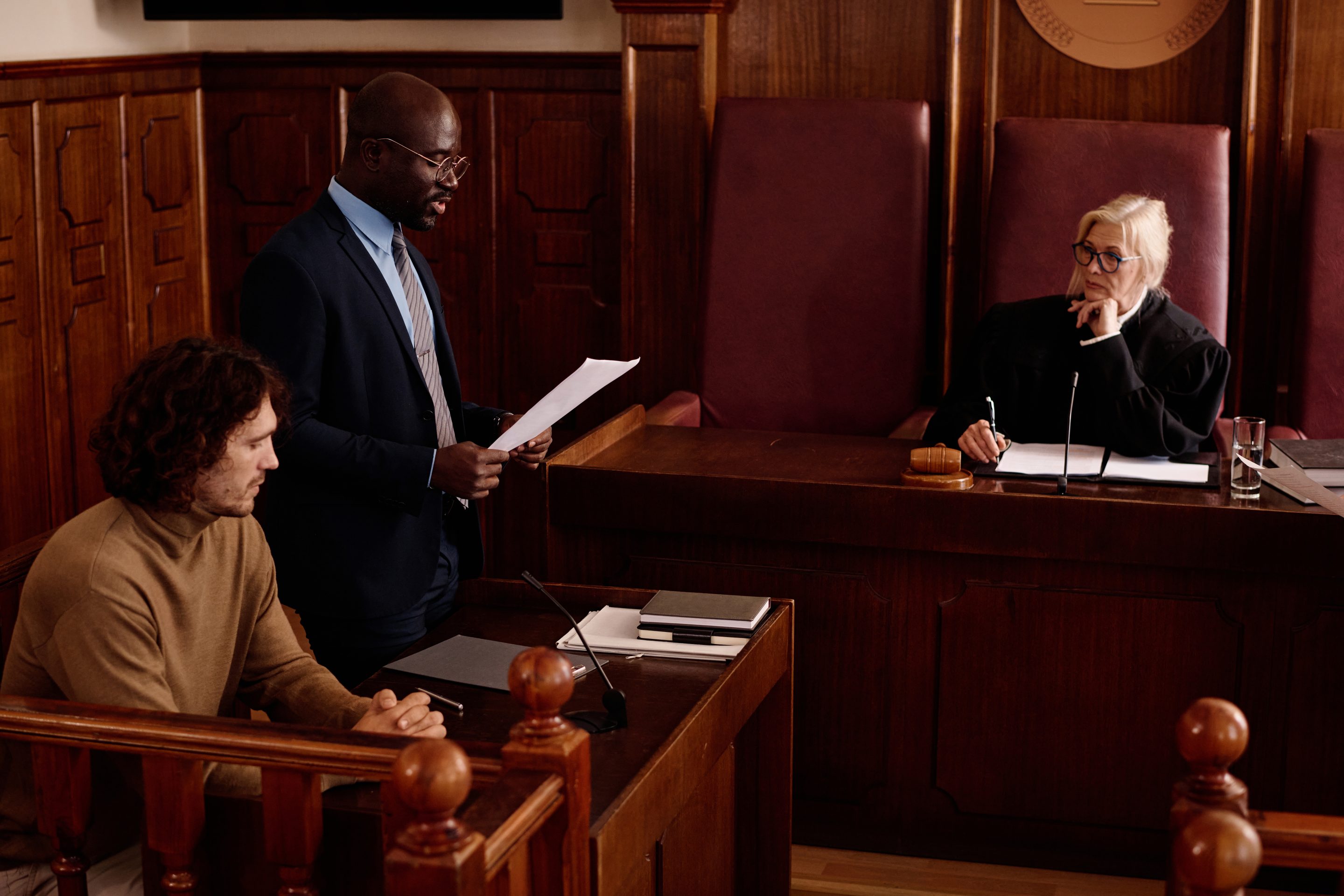
- Presenting Evidence: The prosecution presents the evidence and expert testimony to establish the defendant’s guilt.
- Cross-examination: Defense attorneys challenge the prosecution’s evidence and attempt to create reasonable doubt.
- Jury Deliberation: If the Case goes to trial, a jury deliberates to determine the defendant’s guilt based on the presented evidence.
Effective prosecution of arson cases requires meticulous investigation, a thorough understanding of fire science, and strategic legal maneuvering to build a compelling case against the defendant.
4. What are the penalties for arson in California?
Penalties for arson in California vary significantly based on the degree of the offense, the circumstances surrounding the crime, and any prior convictions. Understanding these penalties is crucial for comprehending the severity of arson charges.
First-Degree Arson (Cal. Penal Code § 451)
- Classification: Felony (wobbler; can be charged as a misdemeanor in some instances)
- Imprisonment: 3, 6, or 11 years in state prison
- Fines: Exceeding $10,000
- Additional Consequences:
- Restitution to victims for property damage
- Probation, depending on the Case
- Long-term impacts on criminal records, affecting future employment and personal opportunities
- Classification: Felony (wobbler)
- Imprisonment: 2, 4, or 6 years in state prison
- Fines: Up to $10,000 or more
- Additional Consequences:
- Restitution and probation similar to first-degree arson
- Potential for enhanced penalties if aggravating factors are present
- Classification: Misdemeanor
- Imprisonment: Up to 1 year in county jail
- Fines: Up to $1,000
- Additional Consequences:
- Probation and restitution may apply
- Lesser impact on criminal records compared to felony charges
Certain circumstances can elevate the severity of arson charges, leading to harsher penalties:
- Endangerment of Human Life: Fires that pose a direct threat to individuals increase the seriousness of the charge.
- Multiple Structures: Setting fire to multiple properties simultaneously or in succession.
- Prior Convictions: A history of arson or other related offenses can lead to enhanced sentencing.
- Use of Explosives: Employing explosive devices to set fires amplifies the danger and potential harm.
- Vulnerable Targets: Targeting properties housing vulnerable populations, such as elderly or disabled individuals.
Conversely, certain factors can lead to reduced penalties:
- Accidental Fire: Demonstrating that the fire was not intentional can lead to lesser charges or dismissal.
- Lack of Criminal History: First-time offenders may receive more lenient sentences.
- Cooperation with Authorities: Assisting in the investigation or showing remorse can positively influence sentencing.
- Minimal Damage: Limited property damage without risk to life may result in reduced charges.
Understanding the range of penalties and the factors that influence them underscores the importance of legal representation in arson cases.
5. Can arson charges be reduced or dismissed?
Yes, arson charges can sometimes be reduced or dismissed through various legal strategies and circumstances. Achieving a reduction or dismissal typically requires demonstrating that the prosecution has not sufficiently proven one or more elements of the crime or that there are extenuating circumstances that warrant leniency.
Strategies for Reducing or Dismissing Arson Charges
- Challenging Evidence:
- Insufficient Proof: Arguing that the prosecution lacks concrete evidence to establish all required elements of arson beyond a reasonable doubt.
- Unreliable Evidence: Highlighting flaws in the evidence, such as contaminated samples or questionable expert testimony.
- Improperly Obtained Evidence: Demonstrating that evidence was collected without proper authorization, violating the defendant’s rights.
- Proving Lack of Intent:
- Accidental Fire: Providing evidence that the fire was unintentional or the result of an accident, negating the malicious Intent required for arson.
- Natural Causes: Establishing that natural phenomena, such as lightning or spontaneous combustion, caused the fire.
- Establishing an Alibi:
- Defendant’s Location: Presenting credible evidence that the defendant was not present at the scene when the fire was set.
- Witness Testimony: Utilizing witnesses to corroborate the defendant’s alibi.
- Consent and Authorization:
- Permitted Burns: Demonstrating that the property owner consented to the burning, such as in controlled agricultural burns or sanctioned demolitions.
- Emergency Situations: Showing that the burning was necessary to prevent more significant harm, such as during a wildfire containment effort.
- Mental State and Capacity:
- Insanity Defense: Arguing that the defendant was not mentally competent at the time of the act, lacking the capacity to form the required Intent.
- Diminished Capacity: Demonstrating that the defendant’s mental state impaired their ability to set the fire intentionally.
- Plea Bargaining:
- Negotiating Lesser Charges: Working with the prosecution to agree on a plea to a lesser offense in exchange for a guilty plea, potentially reducing penalties.
- Deferred Sentencing: Agreeing to certain conditions or rehabilitation programs in exchange for reduced charges.
- Exonerating Evidence:
- Expert Testimony: Presenting expert witnesses to refute the prosecution’s claims about the fire’s cause or the defendant’s Intent.
- Forensic Evidence: Utilizing forensic analysis to challenge the prosecution’s evidence, such as disproving the presence of accelerants.
- Procedural Errors:
- Violation of Rights: Highlighting any procedural mistakes made during the investigation or prosecution that could render the Case invalid.
- Jurisdiction Issues: Arguing that the court does not have proper jurisdiction over the Case.
- Accidental Fire Leading to Charge Reduction: If Intent cannot be established, a defendant who accidentally starts a fire while cooking may have arson charges reduced to reckless burning.
- Insufficient Evidence Resulting in Dismissal: If the prosecution cannot prove the presence of accelerants, a key element of arson, the charges may be dismissed.
- Successful Alibi Leading to Acquittal: A defendant with a solid alibi supported by credible witnesses may be acquitted of arson charges due to lack of evidence.
Successfully reducing or dismissing arson charges often hinges on the quality of legal representation. Experienced defense attorneys can meticulously analyze the evidence, identify weaknesses in the prosecution’s Case, and employ strategic defenses to advocate for the defendant’s best interests.
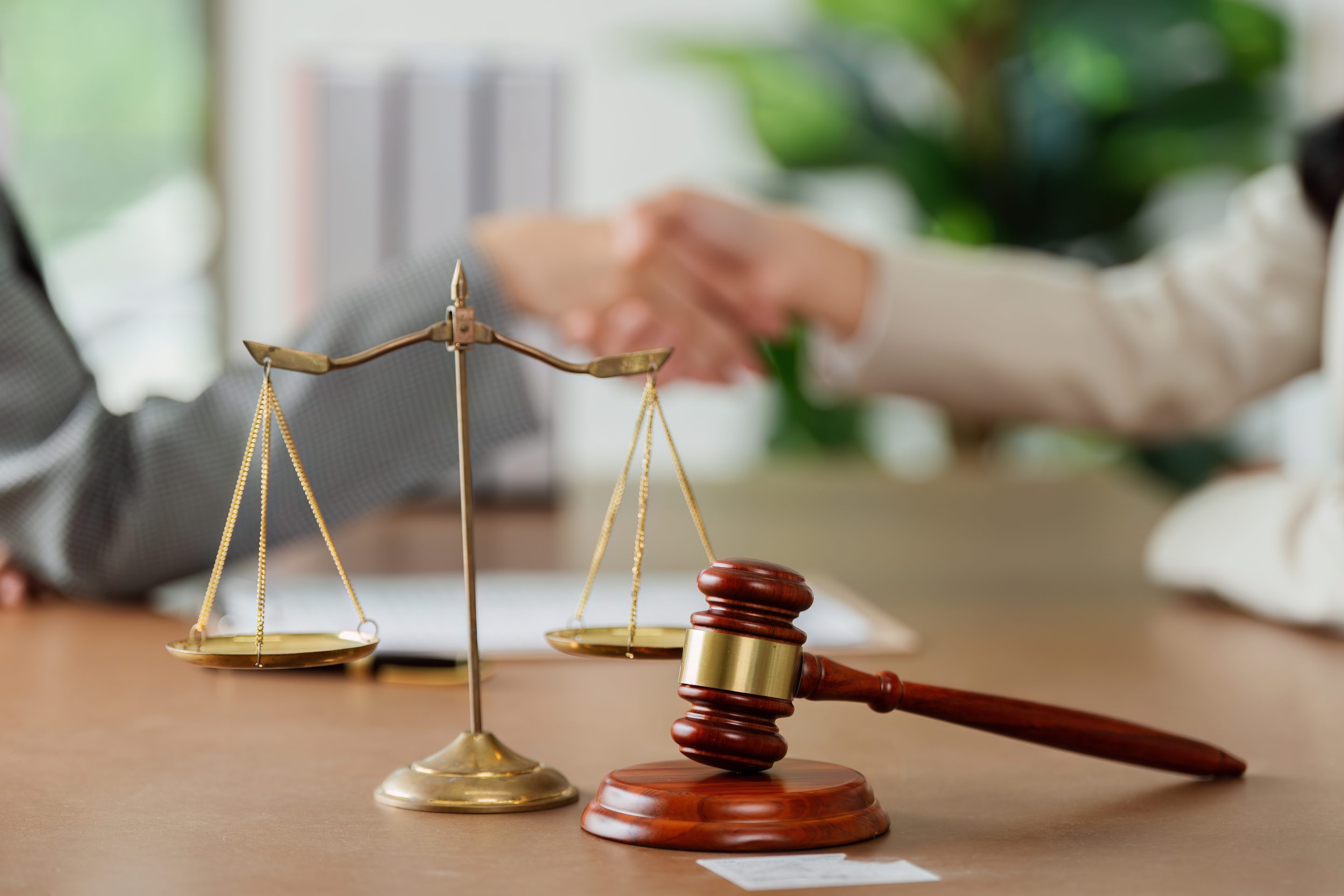
Case Studies: Arson Cases in California
Examining real-life arson cases provides practical insights into how arson laws are applied, the complexities involved in prosecution and defense, and the potential outcomes based on different circumstances.
Case Study 1: Inhabited Structure Arson
Background: John Doe was accused of setting fire to his neighbor’s home with the Intent to commit burglary. Surveillance footage showed Doe near the property shortly before the fire was reported.
Legal Proceedings:
- Prosecution’s Case: The prosecution argued that Doe’s presence at the scene, combined with accelerant residues found in his possession, indicated premeditation and malicious Intent.
- Defense’s Strategy: The defense contended that the accelerant was an everyday household item and that Doe had an alibi supported by phone records, which placed him elsewhere at the time of the fire.
- Outcome: The jury found reasonable doubt regarding Doe’s Intent, resulting in a second-degree arson conviction instead of the initially charged first-degree arson.
Analysis: The Case highlights the importance of Intent and the role of alibi evidence in mitigating charges.
Case Study 2: Arson with Intent to Commit a Felony
Background: Jane Smith was charged with first-degree arson after setting fire to an abandoned warehouse to destroy evidence of her involvement in a drug trafficking operation.
Legal Proceedings:
- Prosecution’s Case: Presented evidence of Smith’s criminal history and her direct involvement in the drug operation, establishing motive.
- Defense’s Strategy: They argued that Smith acted under duress, fearing retaliation from a rival gang, thus lacking the malicious Intent required for arson.
- Outcome: The court accepted the defense’s argument of duress, reducing the charge to second-degree arson.
Analysis: Demonstrates how affirmative defenses like duress can impact the degree of arson charges.
Case Study 3: Accidental Fire Misclassified as Arson
Background: Michael Brown was wrongfully accused of arson after a fire broke out in his garage. Initial reports suggested accelerant use, but further investigation revealed the fire was caused by faulty wiring.
Legal Proceedings:
- Prosecution The prosecution’s Case initially focused on the presence of accelerant residues and Brown’s history of minor property offenses.
- Defense’s Strategy: Brought in fire science experts to testify that the wiring was the likely cause, not intentional ignition.
- Outcome: The charges were dismissed due to a lack of evidence proving intentionality, and Brown was exonerated.
Analysis: Emphasizes the necessity of thorough investigations and the potential for wrongful charges without solid evidence.
The Role of Expert Witnesses in Arson Cases
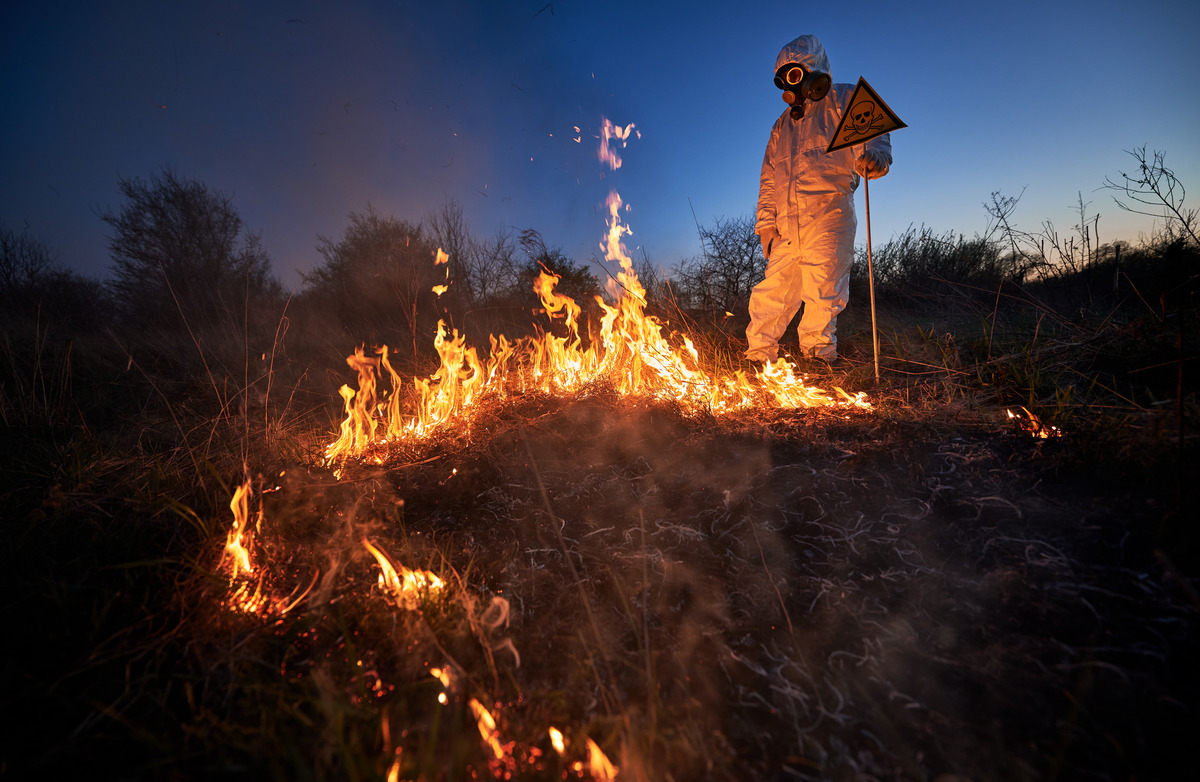
Types of Experts Involved
- Fire Scientists:
- Role: Analyze fire patterns, determine the fire’s origin and cause, and assess whether accelerants were used.
- Impact: Their testimony can confirm or refute claims about intentionality and method of ignition.
- Forensic Chemists:
- Role: Examine chemical residues to identify the presence of accelerants or other substances that indicate arson.
- Impact: Provide evidence on whether accelerants were used, supporting or weakening the prosecution’s Case.
- Structural Engineers:
- Role: Assess the fire’s impact on the structure, determining whether the damage is caused by accidental causes or deliberate burning.
- Impact: Their insights can challenge or corroborate claims about the fire’s progression and damage.
- Surveillance Experts:
- Role: Analyze surveillance footage to establish timelines, identify suspects, and verify alibis.
- Impact: Crucial in cases where visual evidence can place the defendant at or away from the scene.
- Behavioral Analysts:
- Role: Provide insights into the defendant’s behavior and potential motives, especially in cases involving serial arson or patterns of behavior.
-
Impact: Help the court understand the psychological aspects that may indicate malicious Intent.
Importance of Expert Testimony
- Credibility: Experts bring authority and specialized knowledge that can lend credibility to the prosecution or defense’s arguments.
- Clarification: They simplify complex information, making it accessible and understandable to jurors who may not have technical backgrounds.
- Objective Analysis: Expert witnesses offer unbiased opinions based on evidence and scientific principles, aiding in fair adjudication.
Challenges with Expert Witnesses
- Bias Concerns: Experts hired by the prosecution or defense may be perceived as biased, potentially affecting their credibility.
- Disputes Over Findings: Opposing sides may present conflicting expert testimonies, leading to debates over interpretations of evidence.
- Qualifications Scrutiny: The court rigorously examines the qualifications and methodologies of expert witnesses to ensure reliability.
Case Example
In a high-profile arson case, the prosecution presented a fire scientist who testified that the burn patterns and presence of accelerants strongly indicated the intentional setting of the fire. The defense countered with their fire expert, who argued that the patterns were consistent with an electrical malfunction and that the accelerant residues were due to contamination from firefighting efforts. The jury ultimately found the defendant not guilty due to reasonable doubt created by the conflicting expert testimonies.
The Impact of Arson Convictions
An arson conviction carries profound and far-reaching consequences for the defendant, affecting various aspects of their personal and professional life. Understanding these impacts underscores the importance of effective legal defense and the severity of arson charges.
Legal Consequences

- Imprisonment: Depending on the degree of arson, sentences can range from county jail time for misdemeanors to multiple years in state prison for felonies.
- Fines: Significant financial penalties can add to the burden, potentially leading to financial strain or bankruptcy.
- Probation: Conditions of probation may include community service, mandatory counseling, or restrictions on movement and activities.
- Restitution: Defendants may be required to compensate victims for property damage and losses incurred due to the fire.
Personal and Social Consequences
- Criminal Record: An arson conviction results in a permanent criminal record, which can impact future employment, housing, and educational opportunities.
- Reputation Damage: The stigma associated with a felony conviction can lead to social ostracization and strained relationships with family and friends.
- Mental Health: The stress of legal proceedings and incarceration can adversely affect mental health, leading to anxiety, depression, or other issues.
Professional Consequences
- Employment Challenges: Many employers conduct background checks, and an arson conviction can disqualify candidates from various jobs, especially those requiring trust and responsibility.
- Licensing Restrictions: Certain professional licenses may be revoked or denied, limiting career advancement in fields such as law, healthcare, and education.
- Financial Strain: Legal fees, fines, and potential loss of income due to imprisonment or probation can lead to significant financial hardship.
Societal Implications
- Public Safety Concerns: Arson poses a direct threat to public safety, leading to increased vigilance and stricter laws to deter such crimes.
- Community Impact: Fires can devastate communities, causing the loss of homes, businesses, and cherished community landmarks and eroding the social fabric.
Long-Term Effects
- Incarceration: Extended periods of imprisonment disrupt personal lives, lead to loss of employment, and create challenges in reintegrating into society post-release.
- Recidivism Risks: Convicted individuals may face challenges breaking free from the cycle of criminal behavior, especially without adequate support and rehabilitation.
Understanding the multifaceted impact of arson convictions highlights the critical need for effective legal representation and the pursuit of all possible defenses to mitigate these consequences.
Navigating the Legal Process
Facing arson charges involves navigating a complex legal system with multiple stages. Each phase requires strategic decision-making and comprehensive understanding to ensure the best possible outcome.
Arrest and Initial Charges
Arrest:
- Probable Cause: Law enforcement must have reasonable grounds to believe that the defendant committed arson.
- Rights Read: Upon arrest, the defendant is read their Miranda rights, informing them of their right to remain silent and to an attorney.
Booking:
- Documentation: The defendant’s personal information, charges, and fingerprints are recorded.
- Detention: Depending on the severity of the charge and flight risk, the defendant may be held in custody or released on bail.
Initial Charges:
- Filing of Charges: The district attorney reviews the evidence and formally files arson charges against the defendant.
- Charging Decision: Determined by factors such as the degree of arson, evidence strength, and defendant’s criminal history.
Pretrial Proceedings
Arraignment:
- Reading of Charges: The defendant is formally informed of the charges against them.
- Plea Entry: The defendant enters a plea—guilty, not guilty, or no contest.
Discovery:
- Evidence Sharing: Both prosecution and defense exchange evidence relevant to the Case.
- Motion Filings: Pretrial motions may be filed to suppress evidence, dismiss charges, or compel specific actions.
Bail Hearings:
- Bail Determination: The court assesses whether to grant bail and the amount and conditions based on flight risk and danger to the community.
Plea Bargaining:
- Negotiations: The defense and prosecution may negotiate to settle the Case without a trial, often resulting in reduced charges or penalties.
- Agreement: If both parties agree, a plea deal is formalized, and the defendant may accept reduced charges in exchange for a guilty plea.
Trial Phase
Jury Selection:
- Voir Dire: Potential jurors are questioned to identify any biases or conflicts of interest.
- Final Jury: A panel of unbiased jurors is selected to hear the Case.
Opening Statements:
- Prosecution’s Statement: Outlines the Case against the defendant.
- Defense’s Statement: Presents the defense’s perspective and key points.
Presentation of Evidence:
- Prosecution’s Case: Presents evidence and witnesses to establish arson beyond a reasonable doubt.
- Defense’s Case: Challenges the prosecution’s evidence, presents counter-evidence, and may introduce their witnesses.
Cross-Examination:
- Challenging Testimony: Both sides question each other’s witnesses to uncover inconsistencies or weaknesses in the Case.
Closing Arguments:
- Summarizing the Case: Both sides reiterate their main points, emphasizing the strengths of their arguments and the weaknesses of the opposition.
Jury Deliberation and Verdict:
- Deliberation: The jury discusses the Case in private to reach a unanimous decision.
- Verdict: The jury delivers a verdict of guilty or not guilty based on the evidence presented.
Sentencing and Appeals
Sentencing:
- Post-Conviction: If found guilty, the court determines the appropriate sentence based on the degree of arson, mitigating and aggravating factors, and statutory guidelines.
- Probation and Rehabilitation: Alternatives to incarceration may include probation, mandatory counseling, or community service.
Appeals:
- Grounds for Appeal: Legal errors during the trial, improper admission of evidence, or violations of the defendant’s rights.
- Appellate Process: The appellate court reviews the trial proceedings and may uphold, reverse, or remand the Case for further proceedings.
- Potential Outcomes: Convictions may be overturned, sentences reduced, or cases remanded for retrial.
Navigating the legal process in arson cases demands meticulous attention to detail, strategic planning, and skilled legal representation to ensure that the defendant’s rights are protected and that the best possible outcome is achieved.
Conclusion
Arson is a grave offense under California law, encompassing a range of actions that involve the intentional or malicious burning of property. Understanding the elements of arson under California law is crucial for anyone facing such charges or seeking to comprehend the legal landscape surrounding fire-related crimes.
This guide has delved into the definition of arson, the specific elements required for prosecution, the different degrees of arson and their respective penalties, common questions surrounding arson charges, real-life case studies, the role of witnesses, and the profound impact of arson convictions. Additionally, navigating the intricate legal process—from arrest to trial and potential appeals—has been outlined to provide a comprehensive overview.
Arson cases are complex, often involving technical evidence and challenging defenses. The consequences of a conviction extend far beyond legal penalties, affecting personal lives, professional opportunities, and community safety. Therefore, it is imperative to approach arson charges with the utmost seriousness and seek experienced legal representation to navigate the complexities of the law effectively.
Call to Action

Why Choose Roxell Richards Law Firm?
- Expertise: Our legal team possesses extensive knowledge and experience in handling complex arson cases, ensuring a strategic and informed defense.
- Personalized Approach: We recognize that every Case is unique. We take the time to understand your specific circumstances and tailor our defense strategies accordingly.
- Commitment: We are steadfast in our commitment to advocating for your rights and providing unwavering support throughout the legal process.
- Proven Track Record: Our firm has a history of successfully defending clients against serious charges, including arson, securing favorable outcomes through negotiations or trial victories.
Don’t Face Arson Charges Alone
Time is of the essence when dealing with criminal charges. Early intervention by a skilled attorney can significantly impact the trajectory of your Case. Delays can limit available defense options and increase the risks of harsher penalties.
Take the first step towards safeguarding your future. Contact Roxell Richards Law Firm today for a free consultation. Let us provide you with the expert legal guidance and representation you need during this challenging time.
Roxell Richards Injury Law Firm
6420 Richmond Ave. Ste. #135
Houston, TX z7057
Phone: (713) 974-0388
Fax: (713) 974-0003
